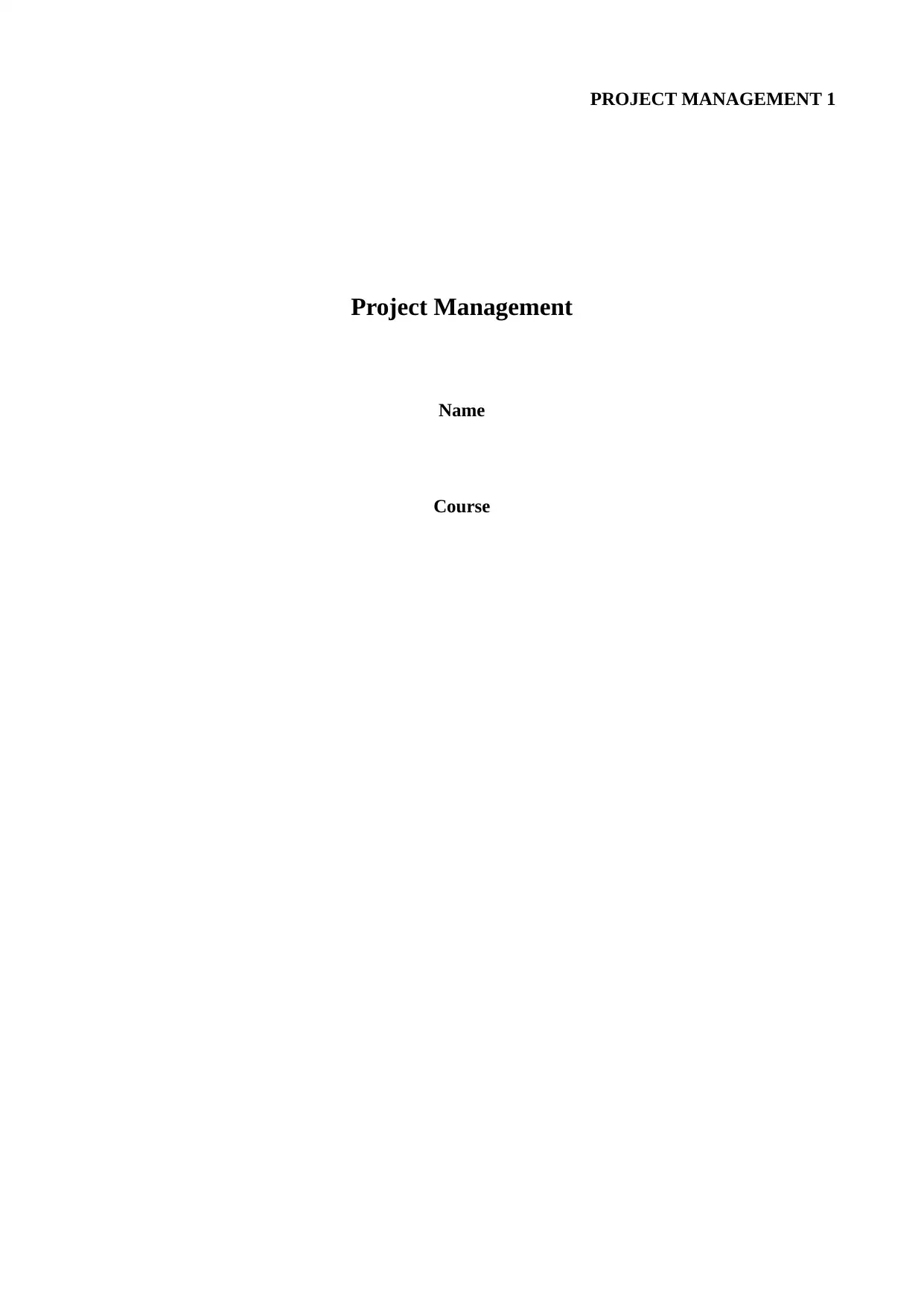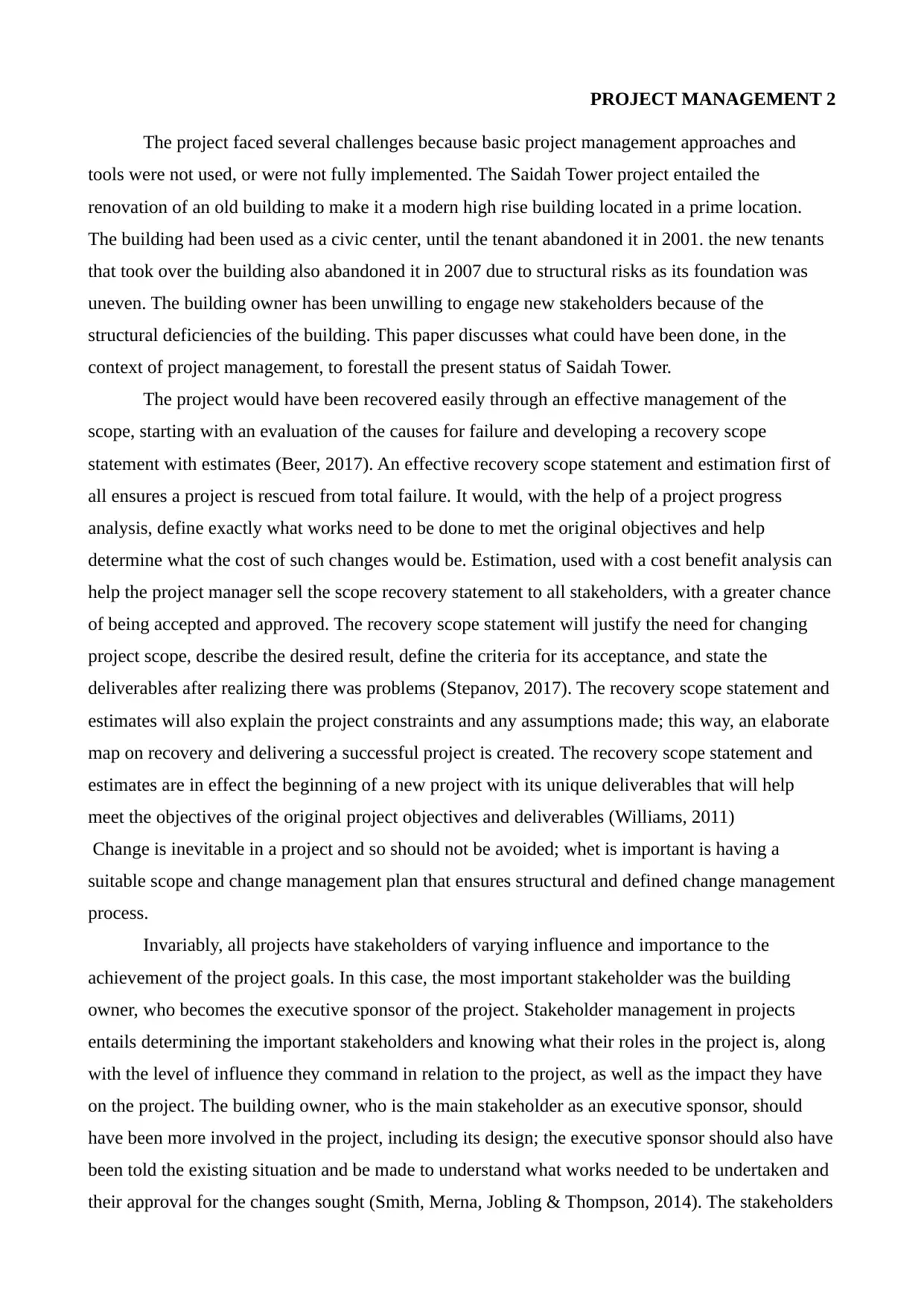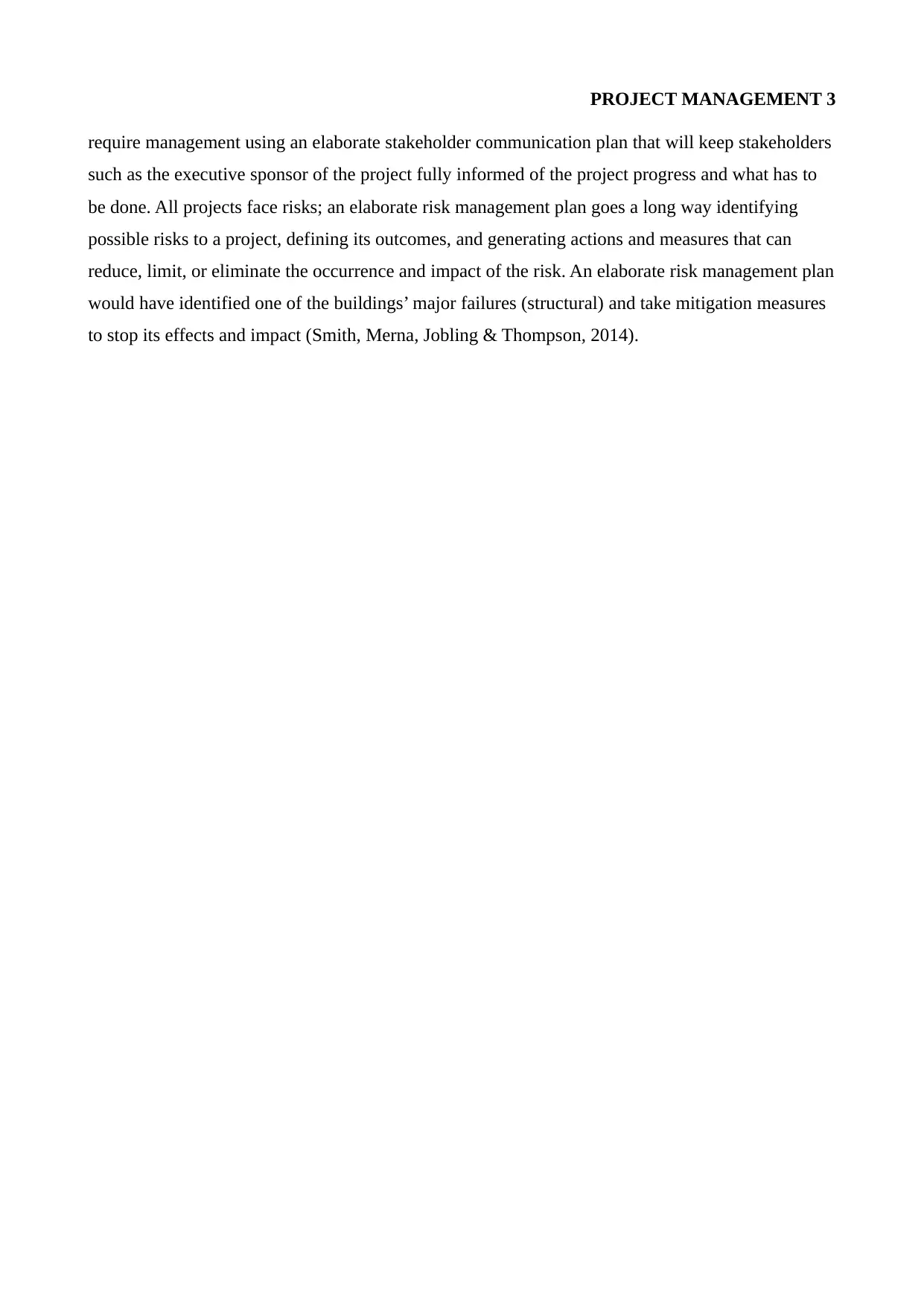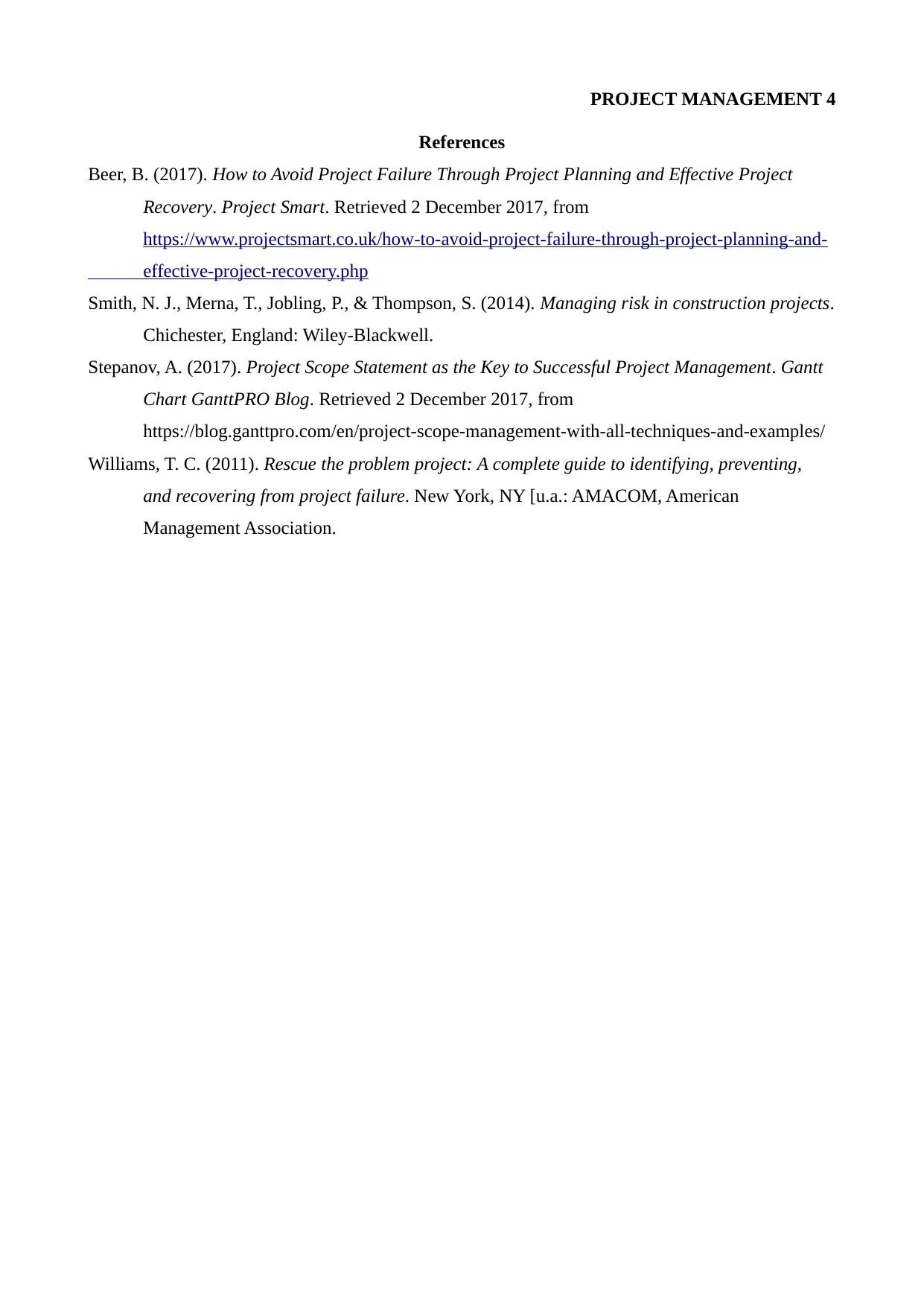Saidah Tower Project Recovery: Applying Project Management Principles
VerifiedAdded on 2023/06/16
|4
|832
|116
Essay
AI Summary
This essay examines the challenges faced by the Saidah Tower project, which involved renovating an old building into a modern high-rise. The project encountered significant issues due to the lack of effective project management approaches and tools, particularly in scope, stakeholder, and risk management. The paper argues that implementing a recovery scope statement, involving key stakeholders like the building owner, and developing a comprehensive risk management plan could have prevented the project's current state. The recovery scope statement would define necessary changes, desired results, and acceptance criteria, while a stakeholder communication plan would keep stakeholders informed. Ultimately, the essay emphasizes the importance of proactive project management strategies in ensuring project success and preventing failure, providing valuable insights for similar projects.
1 out of 4











![[object Object]](/_next/static/media/star-bottom.7253800d.svg)